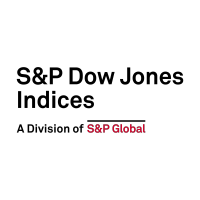Tag Archives: S&P 500 Quality
Examining the Effectiveness of Defensive Strategy Indices
What does history have to say about the effectiveness of factor indices as defensive tools? S&P DJI’s Craig Lazzara explores defense beyond bonds and how defensive factors influence risk/return in different market environments.
Examining Defensive Strategies Through an Index Lens
How are advisors using indices to evaluate defensive strategies as they look to protect client goals amid rising rates and inflation? Join TD Wealth’s Andrew Neatt and S&P DJI’s Julie Ballard for a closer look at the S&P 500 Dividend Aristocrats and S&P 500 Quality indices.
- Categories Factors, Multi-Asset
-
Other Tags
Andrew Neatt, diversification, dividends, Downside Protection, ETFs, Financial Advisors, indexing, inflation protection, Julie Ballard, momentum factor, multi-asset, quality factor, real assets, rising rate protection, S&P 500 Dividend Aristocrats, S&P 500 Factors, S&P Dow Jones Indices, TD Wealth Management, U.S. Treasuries, wealth management
- Categories
- Factors, Multi-Asset
- Other Tags
- Andrew Neatt, diversification, dividends, Downside Protection, ETFs, Financial Advisors, indexing, inflation protection, Julie Ballard, momentum factor, multi-asset, quality factor, real assets, rising rate protection, S&P 500 Dividend Aristocrats, S&P 500 Factors, S&P Dow Jones Indices, TD Wealth Management, U.S. Treasuries, wealth management
An Efficient, Rules-Based Approach to Factor Rotation
Explore how the design of the S&P 500 Factor Rotator Daily RC2 7% Index is helping democratize access to factor investing, providing a simple, rules-based blueprint for building dynamic factor strategies.
- Categories Factors, Multi-Asset
-
Other Tags
dynamic rebalancing, factor investing, Factor Rotation, indexing, Indexing insurance, low volatility, multi-asset, Multi-Factor, risk control 2.0, S&P 500 Enhanced Value, S&P 500 Factor Rotator Daily RC2 7% Index, S&P 500 Factors, S&P 500 High Dividend, S&P 500 Low Volatility, S&P 500 Momentum, S&P Dow Jones Indices, U.S. Treasuries
- Categories
- Factors, Multi-Asset
- Other Tags
- dynamic rebalancing, factor investing, Factor Rotation, indexing, Indexing insurance, low volatility, multi-asset, Multi-Factor, risk control 2.0, S&P 500 Enhanced Value, S&P 500 Factor Rotator Daily RC2 7% Index, S&P 500 Factors, S&P 500 High Dividend, S&P 500 Low Volatility, S&P 500 Momentum, S&P Dow Jones Indices, U.S. Treasuries
Comparing Defensive Factors During the Last 3 Bear Markets
In the factor world of investing, Low Volatility and Quality have been commonly referred to as defensive factors. The following is an examination of the performance of the S&P 500 Quality Index and the S&P 500 Low Volatility Index compared to the S&P 500 during the last 3 equity bear markets. The graphs and data…
- Categories Factors
- Other Tags
- Categories
- Factors
- Other Tags
Symbiotic Sentiments
Sectors and factors are different ways of viewing the world, but they are not mutually exclusive. We find an example of such a close, symbiotic relationship between the technology sector and the quality factor. Exhibit 1 shows that the S&P 500 Information Technology index has a strong tilt towards quality, while the biggest overweight in…
Comparing Bottom-Up versus Top-Down Multi-Factor Construction
The S&P 500® Quality, Value & Momentum Multi-Factor Index is designed to measure the performance of stocks having the highest combination of quality, value, and momentum (QVM). It takes a “bottom-up” approach of scoring each stock on its individual factor attributes and selecting stocks that jointly score highest across all the factors [1]. In light…
- Other Tags
Putting Defensive Indices to the Test
In January 2019, we highlighted several indices designed to reduce the impact of large equity market drawdowns. Here we analyze the same suite of indices divided across three broad categories: defensive equity, multi-asset, and volatility. This analysis simply reviews performance since the S&P 500®’s high on Feb. 19, 2020, through the close on Friday, March…
- Categories Factors, Multi-Asset
-
Other Tags
COVID-19, defensive equities, Dividend Aristocrats, factors, liquid alternatives, liquid alts, low volatility, managed risk, multi-asset, quality, RC2, risk control, risk management, risk parity, S&P 500 Dividend Aristocrats, S&P 500 Low Volatility, S&P Systematic Global Macro, smart beta, strategy, VEQTOR
- Categories
- Factors, Multi-Asset
- Other Tags
- COVID-19, defensive equities, Dividend Aristocrats, factors, liquid alternatives, liquid alts, low volatility, managed risk, multi-asset, quality, RC2, risk control, risk management, risk parity, S&P 500 Dividend Aristocrats, S&P 500 Low Volatility, S&P Systematic Global Macro, smart beta, strategy, VEQTOR
The Quality Factor Beat the S&P 500 in 2019
In 2019, U.S. equities posted double digit gains, with the S&P 500® returning 31.49%—its best year since 2013 and second-best in a decade. This continued strong performance highlights the potential difficulty of beating the S&P 500.[1] The question then arises: what strategy (if any) outperformed the S&P 500 in 2019? Our latest S&P 500 Factor…
- Other Tags
Understanding the ESG Consequences of Factor-Based Investing: Part 2
In our previous blog, we looked at the S&P Factor Indices’ ESG exposures, showing that factor exposures can have an influence on ESG scores. In this blog, we’ll discuss these scores at the sector level and see how implementing an ESG or carbon reduction strategy on poorer ESG-performing factor indices can help investors…
- Categories Factors, Sustainability
- Other Tags
Quality Part I: Defining the Quality Factor
Quality is a factor that is frequently disputed and debated. Academics and practitioners often argue whether quality is a factor at all in the traditional risk factor framework. Often times, the debate stems from the fact that there is no one consistent, overarching definition or metric to measure quality. For example, some market participants see…
- Categories Factors
- Other Tags
- Categories
- Factors
- Other Tags








